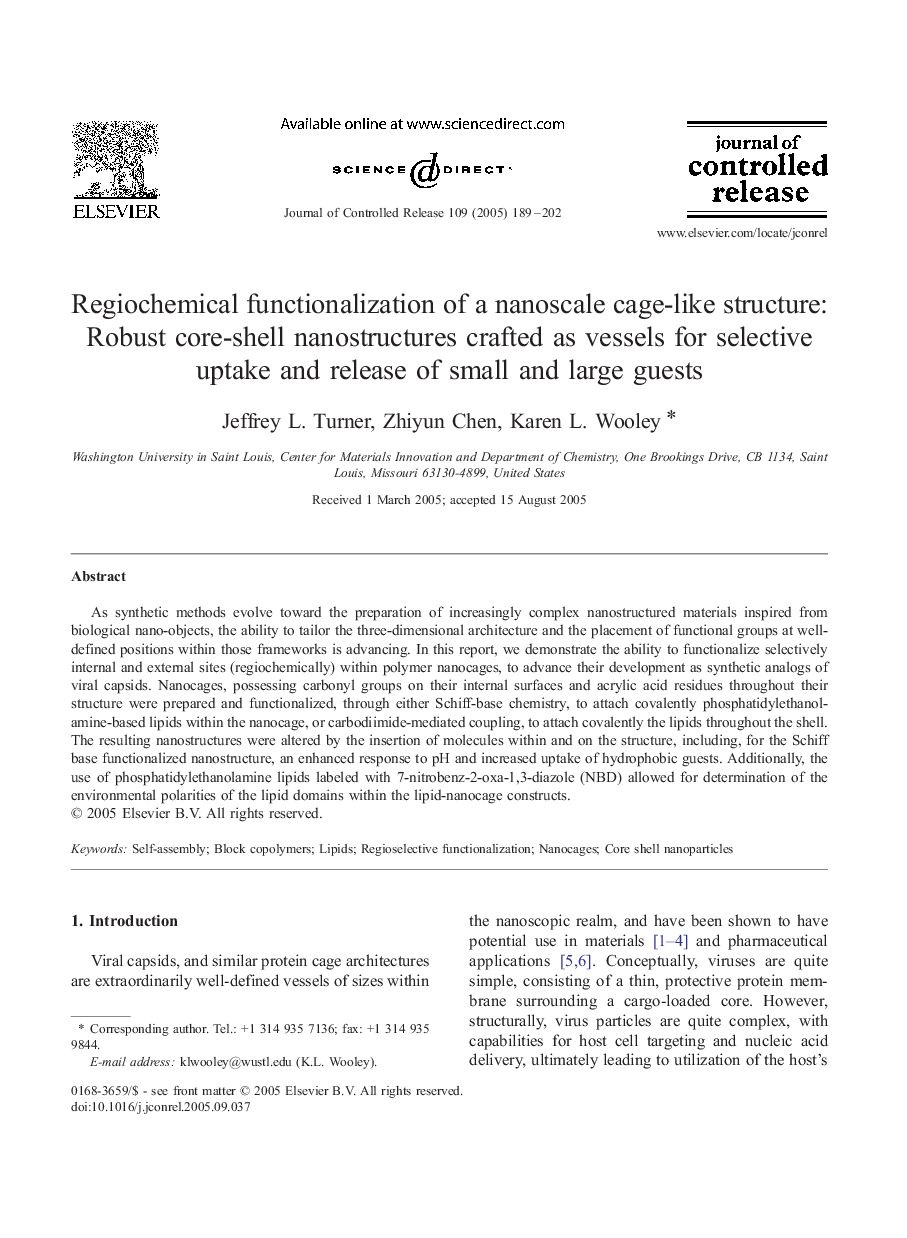| Article ID | Journal | Published Year | Pages | File Type |
|---|---|---|---|---|
| 9774596 | Journal of Controlled Release | 2005 | 14 Pages |
Abstract
As synthetic methods evolve toward the preparation of increasingly complex nanostructured materials inspired from biological nano-objects, the ability to tailor the three-dimensional architecture and the placement of functional groups at well-defined positions within those frameworks is advancing. In this report, we demonstrate the ability to functionalize selectively internal and external sites (regiochemically) within polymer nanocages, to advance their development as synthetic analogs of viral capsids. Nanocages, possessing carbonyl groups on their internal surfaces and acrylic acid residues throughout their structure were prepared and functionalized, through either Schiff-base chemistry, to attach covalently phosphatidylethanolamine-based lipids within the nanocage, or carbodiimide-mediated coupling, to attach covalently the lipids throughout the shell. The resulting nanostructures were altered by the insertion of molecules within and on the structure, including, for the Schiff base functionalized nanostructure, an enhanced response to pH and increased uptake of hydrophobic guests. Additionally, the use of phosphatidylethanolamine lipids labeled with 7-nitrobenz-2-oxa-1,3-diazole (NBD) allowed for determination of the environmental polarities of the lipid domains within the lipid-nanocage constructs.
Related Topics
Physical Sciences and Engineering
Materials Science
Biomaterials
Authors
Jeffrey L. Turner, Zhiyun Chen, Karen L. Wooley,
